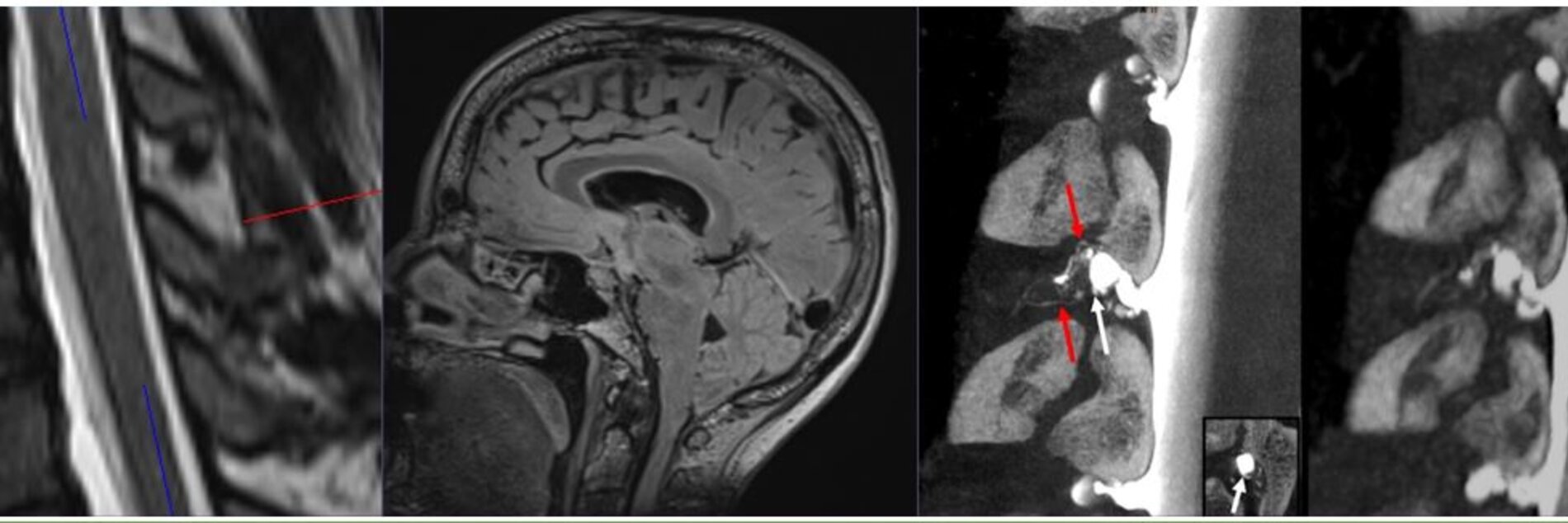spinal CSF leaks
Spontaneous Intracranial Hypotension (SIH)The discovery of various spinal CSF leaks, especially the detection of CSF venous fistulas, has significantly contributed to the diagnosis and treatment of previously often misdiagnosed conditions in recent years.
At our center, we adhere to the classification proposed by Schievink et al., expanded by the variant of a sacral leak described here for the first time by Lützen et al.
ventral leak - Type I
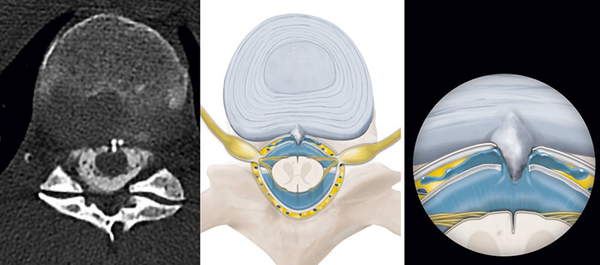
ventral leak and bone spur (Beck et al. Neurology, 2016)
The meninges (Dura) are opened on the anterior side (i.e., towards the abdomen, ventral). This type of leak typically results in an extradural fluid collection. Often, at the level of this leak, a bony spur is found, which in this case is also presumed to be the cause.
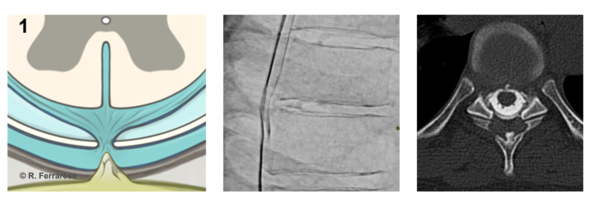
ventral CSF leak (Type I), DSM showing the exit of the contrast agent, bone spur
However, this does not mean that every bone spur causes a spinal CSF leak, nor thus it localize the leak. According to the current state of our experience, precise leak localization through myelography should always be performed before attempting targeted therapy.
Lateral leak - Type II
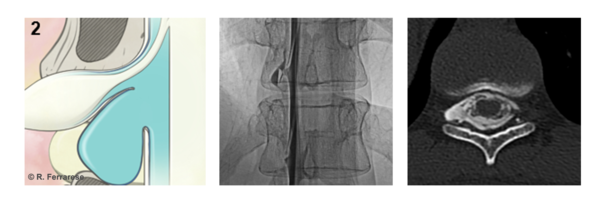
lateral CSF leak (Type 2), localization in DSM and in CT myelography in lateral decubitus position
The leak in the meninges (Dura) is located laterally near the exit of the nerve root. In this location, too, there is often an extradural fluid collection in the spinal canal.
CSF venous fistual (CVF) - Type III
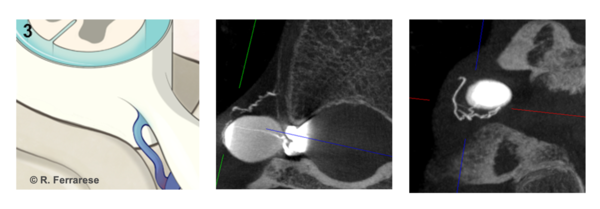
CSF venous fistula (Type 3), localization in DSM and CT myelography in lateral decubitus position
In this type, there is a direct connection between the CSF space and the veins. This leads to excessive drainage of cerebrospinal fluid. There is no extradural fluid collection seen in the MRI.
Sacral leaks
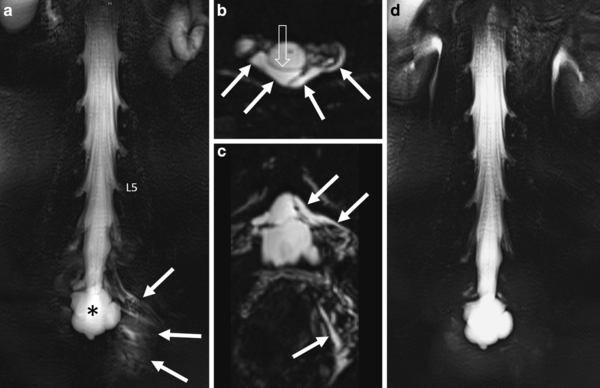
This type of leak is found in the lowest region of the spinal canal. Often, there is an epidural fluid collection associated with it.
Here, you can find guidelines for the treatment of SIH.
You can read more information about our interdisciplinary CSF team, our diagnostic capabilities, and treatment options on these pages.
You can find contact information here.
Additional informational materials and useful links can be found here.
Klinik für Neurochirurgie
im Neurozentrum
Breisacher Straße 64
D-79106 Freiburg
Telefon: 0761 270-50010 /-50020
Telefax: 0761 270-50240
neurochirurgie@uniklinik-freiburg.de
Prof. Dr. Jürgen Beck
Ärztlicher Direktor
Telefon: 0761 270-50060
International call: +49-761-270-50060
j.beck@uniklinik-freiburg.de

André Doherr
Pflegedienstleiter
Telefon 0761 270-52260
Telefax 0761 270-54200
andre.doherr@uniklinik-freiburg.de

Christian Böke
Kaufmännische Geschäftsführung Neurozentrum
Telefon: +49 761 270-21071
christian.boeke@uniklinik-freiburg.de

